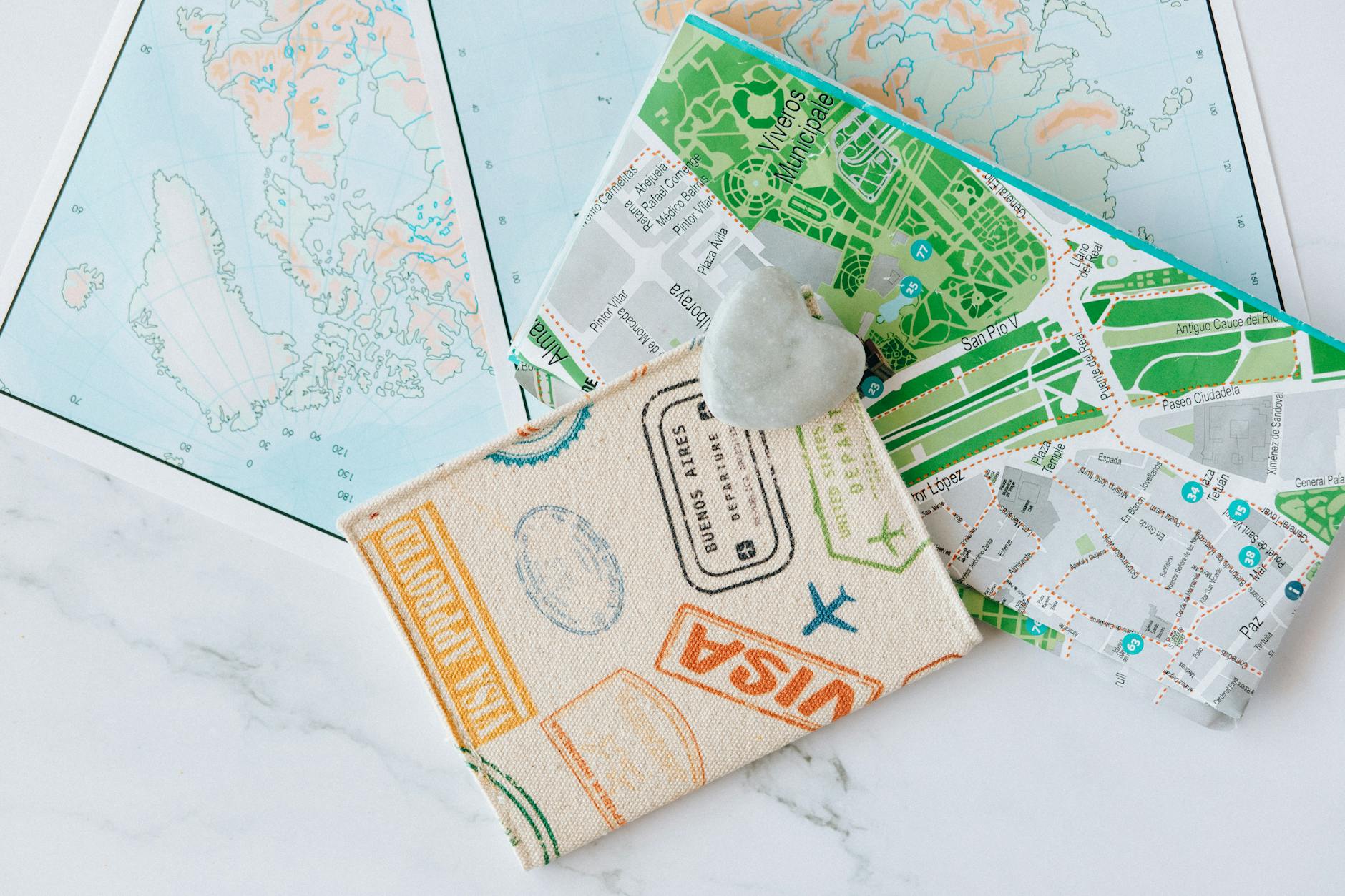
Lisa Maddox
Travel writer
Beyond Borders: Your Travel Guide for Inspiration
Have you ever found yourself scrolling through stunning travel photos, dreaming of distant lands, but feeling overwhelmed by the rules and requirements that seem to accompany international adventures? In today’s world of global exploration, understanding what’s required versus what’s optional can make the difference between a stressful journey and a liberating experience. Just as California voters typically don’t need to present identification at polling stations, many aspects of travel that seem mandatory are actually flexible—giving you the freedom to craft your own unique adventure.
The beauty of modern travel lies in its discretionary nature. Whether you’re considering those “optional” excursions listed in your tour package, navigating the varying entry requirements across different countries, or deciding which local customs to embrace fully, the choices are increasingly yours to make. From facultative activities that enrich your experience to voluntary participation in cultural exchanges, today’s travelers enjoy unprecedented freedom in how they experience the world. Join us as we explore the art of personalizing your journey, understanding travel etiquette, and planning adventures that reflect your own desires and interests—no mandatory itinerary required!
The Freedom of Flexible Travel: Understanding Optional Activities

Why Some Travel Experiences Are Best When Optional
Optional travel activities allow travelers to customize their journeys according to personal preferences and interests. Companies like YMT Vacations offer a range of optional excursions spanning from bucket list experiences like hot air balloon rides to local culinary workshops. This approach not only keeps base costs lower but ensures each traveler’s experience remains unique and personalized to their specific interests rather than following a one-size-fits-all itinerary.
Discretionary vs. Mandatory Attractions: Making Informed Choices
When planning your travel itinerary, distinguishing between must-see attractions and optional experiences helps maximize both enjoyment and budget. Optional excursions typically fall into categories like sightseeing at port stops, unique cultural experiences, or special dining opportunities. These discretionary activities complement the core travel experience while allowing flexibility. The key is making informed choices based on your interests rather than feeling obligated to participate in every available option.
Benefits of Building a Trip Around Your Personal Preferences
Customizing your travel experience through optional activities creates more meaningful and memorable journeys. Travel providers recognize this by offering varied experiences at different activity levels and price points. From exclusive “Bucket List” experiences to local cultural immersion opportunities, the freedom to select what resonates with you transforms a standard vacation into a personalized adventure. This approach ensures your travel budget goes toward experiences you truly value rather than pre-packaged elements you might not enjoy.
Now that we’ve explored how optional activities provide flexibility in your travel planning, let’s examine another crucial aspect of international travel. In our next section on “Navigating Different Travel Requirements Around the World,” we’ll discuss how understanding varying entry requirements and travel insurance options can further enhance your journey while ensuring you’re properly prepared for international adventures.
Navigating Different Travel Requirements Around the World

Now that we’ve explored the flexibility of optional activities in your travels, it’s crucial to understand the mandatory requirements that vary across borders. For U.S. citizens, official resources like Travel.State.Gov provide essential information about entry documentation, visa requirements, and travel advisories specific to each destination. Understanding these requirements is the foundation of smooth international travel.
Understanding Entry Documentation Across Borders
Different countries have varying entry requirements for travelers. While a valid U.S. passport is generally required for international travel, many destinations also require visas for entry. Some countries may have specific documentation requirements for driving, such as an International Driving Permit (IDP). It’s important to note that even U.S. territories have their own passport requirements that travelers must adhere to before departure.
Regional Variations in Identification Requirements
Travel requirements can vary significantly by region. Some countries may require proof of vaccinations, particularly in certain parts of Asia and Africa. Others may have specific rules about passport validity—many nations require that your passport be valid for at least six months beyond your planned departure date. Additionally, entry requirements can change based on the purpose of your visit, whether for tourism, business, or extended stays.
How to Prepare for Both Required and Optional Travel Documents
Preparation is key to navigating travel requirements successfully. Start by reviewing Travel Advisories for your destination to understand specific entry, exit, and visa requirements. Consider enrolling in the Smart Traveler Enrollment Program (STEP) to receive important updates from U.S. embassies or consulates abroad. For added convenience, look into Trusted Traveler Programs like TSA Precheck and Global Entry, which can expedite security processes.
With a clear understanding of travel requirements across borders, you’re now ready to focus on creating a personalized travel experience that reflects your preferences while respecting necessary regulations. In the next section, we’ll explore how to blend mandatory requirements with your personal travel style for a truly customized journey.
Creating Your Personalized Travel Experience

Now that we’ve navigated the different travel requirements across the globe, it’s time to focus on crafting your own unique journey. With services that have created over 500,000 itineraries worldwide, personalization has become the cornerstone of memorable travel experiences. Whether you’re drawn to Costa Brava’s coastlines or Tbilisi’s historic streets, today’s travel planning tools make customization accessible to everyone.
Balancing Structured Itineraries with Spontaneous Exploration
The most fulfilling trips often strike a perfect balance between careful planning and spontaneous discovery. Modern travel platforms offer this flexibility by providing structured daily recommendations while leaving room for unexpected adventures. You can follow a curated itinerary with restaurant suggestions and attraction visits during the morning, then allow yourself to wander freely in the afternoon. This approach ensures you don’t miss must-see destinations while still experiencing the joy of stumbling upon hidden gems that aren’t in any guidebook.
Tailoring Your Journey to Individual Interests and Needs
Today’s travel planning services excel at personalization. By simply inputting your destination, travel dates, and specific interests, you can receive a customized itinerary drawn from vast databases of attractions and restaurants. Some platforms analyze billions of traveler reviews and offer recommendations based on just four questions about your preferences. This means history buffs can focus on museums and archaeological sites, while food enthusiasts might receive a route centered around local culinary experiences. The ability to save points of interest to custom maps further enhances this tailored approach.
The Art of Selective Tourism: Choosing What Matters Most to You
With access to millions of destinations and countless attractions, the modern traveler faces the challenge of selection. Rather than attempting to see everything, selective tourism encourages you to identify what truly resonates with your personal interests. Whether manually curating your itinerary or utilizing AI builders to compile favorites into a cohesive plan, the focus remains on quality experiences over quantity. This approach reduces travel fatigue and creates more meaningful connections with each destination.
As we prepare to explore travel etiquette in our next section, remember that personalization extends beyond what you see to how you interact with local customs. Understanding when to observe traditions and when you have flexibility will further enhance your carefully crafted travel experience.
Travel Etiquette: When to Follow Customs and When You Have Flexibility

Now that we’ve explored how to create your personalized travel experience, let’s navigate the important balance between respecting local customs and maintaining personal freedom while traveling.
Cultural Expectations vs. Tourist Allowances
Understanding cultural nuances is essential for respectful travel. What’s acceptable in one culture may be offensive in another—a thumbs-up sign is positive in Western countries but offensive in parts of the Middle East. Similarly, eye contact shows respect in the U.S. but can appear confrontational in Japan. While tourists are often given some leeway, it’s always better to familiarize yourself with basic customs before arrival.
Different countries have distinct expectations regarding etiquette. In Japan, removing shoes indoors and proper chopstick use are crucial signs of respect. India requires using your right hand for eating and conservative dress. In the UAE, modest attire is necessary, especially during Ramadan when eating in public during daylight hours should be avoided. French dining etiquette includes keeping hands visible and placing bread directly on the table, while in China, accepting gifts with both hands shows proper respect.
Respecting Local Traditions While Maintaining Personal Freedom
When traveling, observe local behaviors for guidance on appropriate conduct. In China, leaving food on your plate signals you’re full, whereas in Western countries, it might suggest dissatisfaction. Tipping practices vary dramatically—15-20% is expected in the USA, while in Japan, tipping is considered rude. For religious sites, modest attire is typically required, with covered shoulders and knees being common expectations.
A practical approach to maintaining flexibility while respecting customs is carrying adaptable items like lightweight scarves that can quickly cover shoulders or hair when needed. To minimize unwanted attention, avoid flashy clothing or excessive displays of wealth, especially in conservative regions. Remember that your body language communicates volumes—nodding means “yes” in most places but “no” in Bulgaria, and pointing feet at someone is disrespectful in Buddhist cultures.
Building Meaningful Connections Through Respectful Choices
Learning basic local phrases demonstrates respect and enhances interactions with locals. Apps like Duolingo can help prepare you with essential expressions before your trip. When taking photographs, always ask permission, particularly in rural areas or sacred sites where photography may be restricted or considered intrusive.
The beauty of cultural respect lies in the connections it creates. By making an effort to honor local traditions while exercising personal choice where appropriate, you transform from merely a tourist to a welcome visitor. These respectful choices open doors to authentic experiences and meaningful relationships that enrich your journey far beyond sightseeing. With this mindset of respectful flexibility, you’ll be well-prepared for planning your next adventure where the freedom of choice becomes your greatest travel asset.
Planning Your Next Adventure: The Freedom of Choice

Now that we’ve explored travel etiquette and when customs are flexible, let’s focus on planning your next adventure. The freedom to choose your own travel experiences has been revolutionized by services like The Destination Designer and Jess.Travel, which offer personalized itineraries without the hassle of unreliable online information or traditional travel agency constraints.
These bespoke planning services emphasize transparency and human-centered approaches, ensuring your adventure reflects your preferences. Whether you desire chef-led culinary experiences or archaeologist-guided excursions, personalized travel planning can balance must-see attractions with unique discoveries while saving you money compared to standard packages.
Tools for Designing a Customized Travel Experience
Modern travel planning tools have transformed how we create personalized journeys. The Destination Designer offers 24-hour concierge support tailored to individual preferences, budgets, and safety concerns. Their process involves a free consultation to discuss specific needs, followed by a curated travel plan review. This approach ensures travelers receive high-quality experiences without wasting time on unreliable information.
Jess.Travel provides detailed itineraries accessible via app or PDF, designed to enhance your travel experience while eliminating logistical headaches. By fostering relationships with local experts and utilizing technology, these services help you craft an adventure that aligns perfectly with your vision, whether you’re planning a beach getaway, urban adventure, or off-the-beaten-path exploration.
Balancing Must-See Attractions with Personal Discoveries
The key to a fulfilling travel experience lies in finding harmony between iconic attractions and personal discoveries. Unlike traditional travel agents, specialized planners emphasize creating a balance that respects your unique interests. The Destination Designer cultivates relationships with local experts to offer exclusive experiences that go beyond tourist traps, such as archaeologist-guided excursions for history enthusiasts.
Jess.Travel focuses on creating efficient routes that prevent common pitfalls like arriving at closed attractions, while still allowing for spontaneous exploration. This balanced approach ensures you don’t miss significant landmarks while creating space for those unexpected moments of discovery that often become the highlight of any journey.
Making the Most of Voluntary Experiences and Activities
To truly embrace the freedom of choice in travel, consider the value of voluntary experiences that align with your personal interests. The Destination Designer specializes in curating unique activities tailored to individual preferences, offering everything from exclusive culinary experiences led by local chefs to specialized tours guided by subject matter experts.
Jess.Travel emphasizes that their personalized approach accommodates diverse preferences for solo travelers, families, or any group seeking memorable adventures. By eliminating conflicts of interest such as kickbacks or partnerships, these services ensure recommendations are based solely on enhancing your experience. This client-centered approach helps you maximize enjoyment of optional activities while avoiding the pressure of prescribed tourist itineraries.
Conclusion

As we’ve explored throughout this guide, travel is a deeply personal experience where flexibility plays a crucial role. From understanding optional activities that enhance your journey without being mandatory, to navigating varying requirements across different countries, the freedom to create your own adventure lies at the heart of meaningful travel. Remember that while some customs should be respected, many aspects of travel offer room for personal choice and adaptation to your unique preferences.
Your next adventure awaits with endless possibilities. Whether you’re planning to immerse yourself in new cultures, explore natural wonders, or simply take a break from routine, embrace the discretionary nature of travel experiences. The beauty of modern exploration is that you can choose what matters most to you—being voluntary participants in some activities while prioritizing others. Pack your bags, keep an open mind, and remember that the most memorable journeys often happen when we balance respect for local customs with the freedom to chart our own path. Where will your travels take you next?

